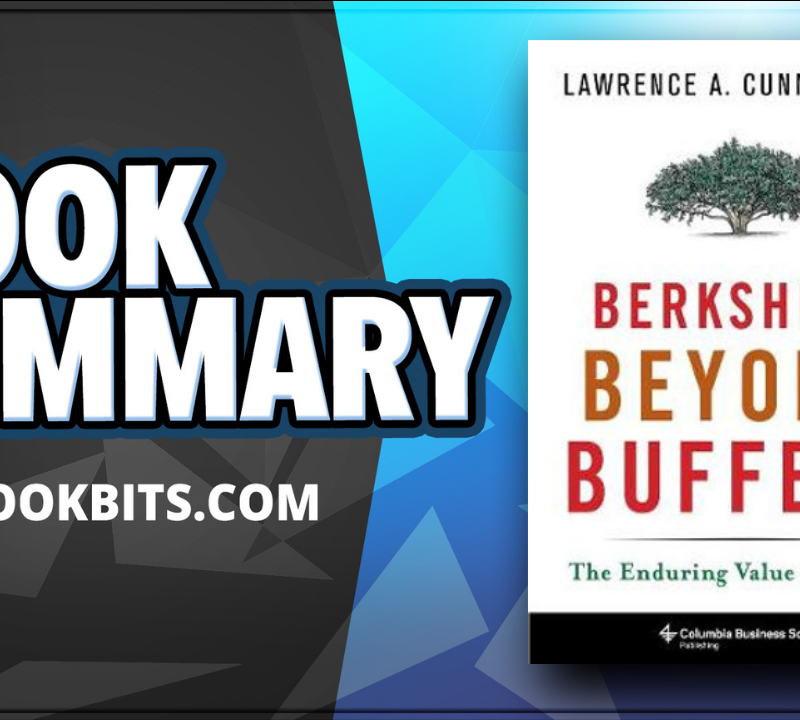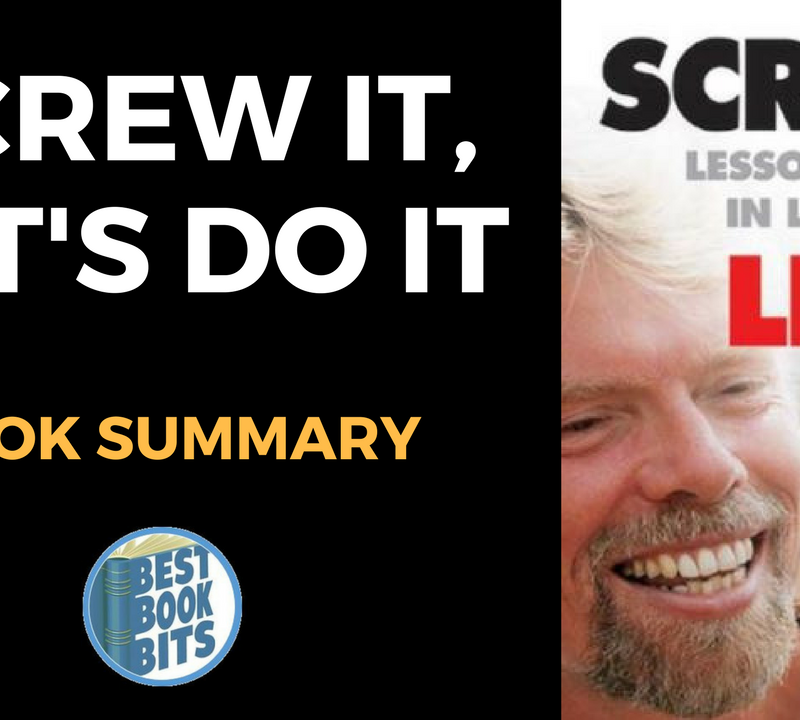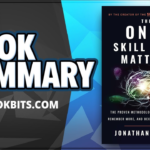★DOWNLOAD THIS FREE PDF SUMMARY HERE
? MY FREE BOOK TO LIVING YOUR DREAM LIFE”
? SPONSOR BESTBOOKBITS BY USING PATREON
? SUPPORT BESTBOOKBITS BY CLICKING THE LINKS BELOW
- 150 PDF Summaries
- Coaching Program
- Subscribe to My Channel
- Website
- Spotify
- Book Club
- Mailing List
- Comedian Milton Berle used to say, “If opportunity doesn’t knock, build a door.” If we want to realize our full potential as creatives and individuals, being proactive isn’t just an option, it’s a requirement.
- Having the ability to chart your own course shifts the onus of leadership back onto you. This means that we cannot expect our managers to take charge of our career development and groom us for greatness. We cannot wait quietly for the perfect mentor to arrive and guide us in the development of our craft. And we cannot count on a future filled with signposts and opportunity.
- Your ability to realize your potential will depend upon your willingness to hone your skills, to take bold risks, and to put your ego on the line in pursuit of something greater.
- Traditional career advice suggests a passive approach to finding your calling: Pick a job listing, apply, wait for a response. Get the job, perform your duties, wait for a promotion. Rinse, repeat, stagnate. But a wait-and-see attitude is hardly the path to greatness.
- With the access and resources of the twenty-first century at our fingertips, we can and should be active participants in shaping our future. We must seek out opportunities by strategizing with the resourcefulness and adaptability of a start-up entrepreneur, and we must draw opportunity to us by relentlessly developing our raw skills—excelling at our craft in a way that cannot go unnoticed.
- We must look at the market and align our interests and abilities with something that people actually want. And we must keep an ear to the ground for the unexpected—never holding so tightly to our plans that we let luck pass us by.
- Greatness doesn’t come from taking a “lean back” approach to career planning. Get out in front of opportunity—and it will come to you.
- “Follow your passion” is bad advice. Very few people have pre-existing passions that they can match to a job. Telling them to “follow their passion,” therefore, is a recipe for anxiety and failure. To build a career, the right question is not “What job am I passionate about doing?” but instead “What way of working and living will nurture my passion?”
- Following your passion—choosing a career path solely because you are already passionate about the nature of the work—is a poor strategy for accomplishing this goal. It assumes that you have a pre-existing passion to follow that matches up to a viable career, and that matching your work to a strong interest is sufficient to build long-term career satisfaction. Both of these assumptions are flawed.
- It teaches us that we should begin by systematically developing rare and valuable skills. Once we’ve caught the attention of the marketplace, we can then use these skills as leverage to direct our career toward the general lifestyle traits (autonomy, flexibility, impact, growth, etc.) that resonate with us.
- Put another way: don’t follow your passion, cultivate it.
- Muhammad Yunus, Nobel Peace Prize winner and microfinance pioneer, says, “All human beings are entrepreneurs. When we were in the caves, we were all self-employed… finding our food, feeding ourselves. That’s where human history began. As civilization came, we suppressed it. We became ‘labor’ because they stamped us, ‘You are labor.’ We forgot that we are entrepreneurs.”
- All humans are entrepreneurs not because all people should start companies, but because the will to create and forage and adapt is part of our DNA. As Yunus says, these qualities are the essence of entrepreneurship. To adapt to the challenges of the world today, you need to rediscover these entrepreneurial instincts.
- Keeping yourself in “permanent beta” makes you acknowledge that you have bugs, that there’s more testing to do on yourself, and that you will continue to adapt and evolve. It means a lifelong commitment to continuous personal growth. It is a mindset brimming with optimism because it celebrates the fact that you have the power to improve yourself and, more important, improve the world around you.
- You need to have very little tolerance for stagnation, and if something you’re working on doesn’t go the way you wanted, you need to have a high capacity for discarding it and moving on to something else.
- The guiding principle is your own passion and your own search for meaning. What mission are you on? What is the mission that you are trying to fulfill in your life that gives your business meaning, that gives your work meaning? And the answer to that may change over time. You may have various missions during the course of your life. But that’s what will dictate how you should be spending your energy.
- It’s easy to get sucked into chasing after a specific job title—whether it’s becoming a creative director, a chief marketing officer, or a product manager. But titles are a trap. The job you want today may not exist tomorrow. Thus, by tailoring your goals and your skill development to attaining a specific position, you limit your options.
- Rather than setting your sights on a specific role, focus instead on what you want to accomplish.
- Lucky people take advantage of chance occurrences that come their way. Instead of going through life on cruise control, they pay attention to what’s happening around them and, therefore, are able to extract greater value from each situation… Lucky people are also open to novel opportunities and willing to try things outside of their usual experiences. They’re more inclined to pick up a book on an unfamiliar subject, to travel to less familiar destinations, and to interact with people who are different than themselves.
- Aside from lots of hard work, great creative careers are powered by an intersection of three factors: interest, skill, and opportunity.
- It’s easy to sleepwalk through life, to operate at the level of “good enough,” to define a destination and then go on autopilot. But if we want to truly excel in our careers, we must awaken to our own profound capacity for growth. Our intelligence, our talents, and even our habits are all remarkably malleable.
Focusing on getting better, rather than being good. –Heidi Grant Halvorson
- When we have a Be Good mindset, we are constantly comparing our performance with that of other people’s, to see how we size up and to receive validation for our talents. This is the mindset we end up with when we are given too much “ability” praise and come to believe that our talents are innate and unchanging. It’s also the mindset we often (unconsciously) adopt when our environment is highly evaluative—when our work is constantly exposed to the judgment of others.
- A Get Better mindset, on the other hand, leads instead to self-comparison and a concern with making progress: How well am I doing today, compared with how I did yesterday, last month, or last year? Are my talents and abilities developing over time? Am I moving closer to becoming the creative professional I want to be?
- Compare your performance today with your performance last week or last year, rather than comparing yourself with other people.
- Embedded in these findings are powerful and highly specific lessons for anyone seeking mastery. The first one has to do with the power of ritual. A ritual is a highly precise behavior you do at a specific time so that it becomes automatic over time and no longer requires much conscious intention or energy.
- The best way to practice is in time-limited sprints, rather than for an unbounded number of hours. It’s far less burdensome to mobilize attention on a task if you’ve got clear starting and stopping points. The ability to focus single-mindedly lies at the heart of mastering any challenge. Time-limited sessions also make it easier to tolerate abstaining from distractions such as e-mail and social media.
- The third key to mastery is perhaps the most counter-intuitive. It’s the importance of restoration. Many of us fear that taking time for rest and renewal will brand us as slackers. More, bigger, faster, for longer, remains the prevailing ethic in most corporate cultures. In fact, rest is a critical component of achieving sustainable excellence over time.
- Researchers have found that our conscious mind is better understood as an explainer of our actions, not the cause of them. Instead of triggering the action itself, our consciousness tries to explain why we took the action after the fact, with varying degrees of success. This means that even the choices we do appear to make intentionally are at least somewhat influenced by unconscious patterns.
- Opportunities flow through people. If you want a job, what you need is someone to hire you. If you want capital to start a business, what you need is an investor. If you want to sell a product, what you need is a customer. At every stage in our careers, whatever level of opportunity or growth we seek, we depend on relationships to drive us forward.
- In a world of collaborative creation, whom we surround ourselves with dictates how much we can achieve.
- Views contrary to your own are always helpful, as sometimes you will see the truth in them and effect change, and, if not, you will be stress-testing and ultimately strengthening your own convictions.
- At the heart of social contracting is spending time up front talking about the How—the relationship and how we’ll work together—rather than being seduced by the What, the excitement and urgency of the content, what needs to be sorted out and solved.
- If you don’t ask, you’ll never get. Sure, you may only get a little bit at a time. But if you don’t ask, 100 percent of the time you won’t get. You’ve just got to get over yourself. We live in a connection economy. If you can’t connect with people for them to understand what you have to offer, you’re working in a vacuum and you’re going to lose out. You end up getting bitter in that situation, because you see your peers are moving up and doing things, and you say, “I could be doing those things. Why not me?”
- The underlying spirit of networking is generosity. If you engage with people in the spirit of generosity, as opposed to tit for tat—“I gave you three things, now you give me three things”—you’ll go so much farther.
- Too much familiarity in your creative team can lead to stagnation, while too little can mean you’re constantly out of sync and spinning your wheels. The most important takeaway for you as an individual might well lie in understanding the paramount importance of collaboration. If you really want your creative projects to take off, don’t go it alone.
- Realizing your full creative potential—and that of others—not just dreaming up visions, but doing the work of execution; not just solo creation, but co-creation with others; not just issuing commands, but collaborating with expert partners.
- Keep your “hand in,” even if you move into a management role. Doing this will have several benefits: (1) on a personal level, you’ll derive satisfaction from doing the work yourself, (2) it will deepen your understanding of the challenges faced by your team, and (3) since most creatives make judgments based on talent and achievement, you’ll maintain the respect of your team.
- When you take charge of a project, start by inspiring people with your vision. And make sure all those involved are crystal clear about their responsibilities and non-negotiable deliverables. But don’t micro-manage or insist they do everything your way. If you really want to get the best out of them, leave plenty of gaps for them to fill with their creativity and initiative.
- Co-creation involves letting go of control, listening—really listening—to people around you, and delegating responsibility to them. Most of all, it means building trust: earning the trust of others, trusting them in return, and trusting that together you can build something bigger and more inspiring than any of you could achieve on your own.
- Nothing great has ever been achieved by sticking with the status quo. If you want to create something new and different, risk-taking needs to be part of your repertoire.
- But that’s easier said than done when our brains are hardwired to avoid uncertainty and play it safe. When we think about risks, we think about failure. When we think about failure, we start to get scared. When we start to get scared, our brains send out signals to get the hell out of there.
- The upside of risk is that—no matter what the outcome—we act, we learn, and we grow. And when tomorrow comes, we’re better equipped to face it.
- Just as we have a physical immune system to fight threats to our body, we have a psychological immune system to fight threats to our mental health. We identify silver linings, rationalize our actions, and find meaning in our setbacks. We don’t realize how effective this immune system is, however, because it operates largely beneath our conscious awareness. When we think about taking a risk, we rarely consider how good we will be at reframing a disappointing outcome. In short, we underestimate our resilience.
- Failure gives us valuable feedback that we use to address our regrettable actions and improve our situation in the future.
- Of the many regrets people describe, regrets of inaction outnumber those of action by nearly two to one. Some of the most common include not pursuing more education, not being more assertive, and failing to seize the moment. When people reflect later in life, it is the things they did not do that generate the greatest despair.
- Imagining the realization of the opportunity is much harder. But not making the attempt guarantees you won’t realize the ultimate benefits. It is necessary to broaden the mind, see the bigger picture, and know that with determination obstacles will be overcome.
Many of life’s failures are people who did not realize how close they were to success when they gave up. —Thomas Edison
- Failure is inevitable, and that the key to success is not dodging every bullet but being able to recover quickly.
- The key is being able to see these experiences as experiments that yield valuable data and to learn what to do differently next time. For most successful people, the bottom is lined with rubber as opposed to concrete. When they face a failure, they hit bottom, sink in, and then bounce back, tapping into the energy of the impact to propel them into another opportunity.
- There are five primary types of risks: physical, social, emotional, financial, and intellectual. I often ask people to map their own risk profile. With only a little bit of reflection, each person knows which types of risks he or she is willing to take. They realize pretty quickly that risk-taking isn’t uniform.
- Move too slowly and there’s no output. The process becomes consumed by inertia and either suffers from paralysis or moves at a pace that’s so slow it all but ensures the endeavour is killed before it ever yields meaningful output.
- Nothing truly innovative, nothing that has advanced art, business, design, or humanity, was ever created in the face of genuine certainty or perfect information.
- But dig a little bit deeper and you will find one of the most fundamental truths about success in design, business, and innovation generally. It comes down to this: none of these people or organizations really had much of a clue as to exactly which one of their ideas was going to work.
- Success, it turns out, has far less to do with figuring out exactly what the right next move is and far more to do with serendipity and randomness.
- The more times you try, the more likely that you will create successful designs, start-ups, or pieces of art.
- If you should place many bets to increase your chances of success, then it also follows that you cannot afford to do so if those bets are large. If just one of those large bets fails, you may not get a second chance, since you will be out of resources. Unfortunately, we tend to believe that if we just had more money or more resources we could increase our chances of success. The facts on the ground don’t support such a view.
- The world is random and unpredictable, which means that it is close to impossible to outline exactly what your next best move is. But you can explore it—by doing and trying. Just make sure you don’t go all in before you’ve figured out that it works.
- The Better You knows the same things you know. They’ve had the same successes you’ve had, and they’ve made the same mistakes. They strive for the same virtues and falter to the same vices. The Better You procrastinates, too. The Better You is not perfect. But the difference between you and the Better You is that the latter reacts a little faster, with a little more willpower. They practice their virtues a little more often and succumb to their vices a little less often. They rein in their procrastination a little quicker. They start their work a little earlier. They know when to take a break a little sooner.
★DOWNLOAD THIS FREE PDF SUMMARY HERE
? MY FREE BOOK TO LIVING YOUR DREAM LIFE”
? SPONSOR BESTBOOKBITS BY USING PATREON
? SUPPORT BESTBOOKBITS BY CLICKING THE LINKS BELOW













